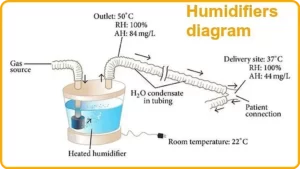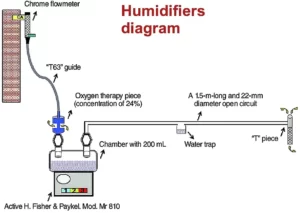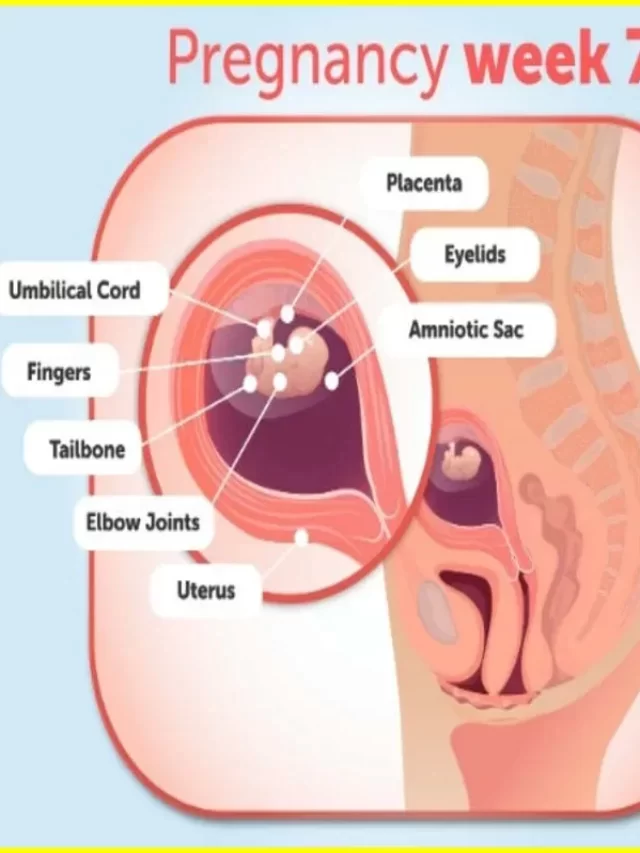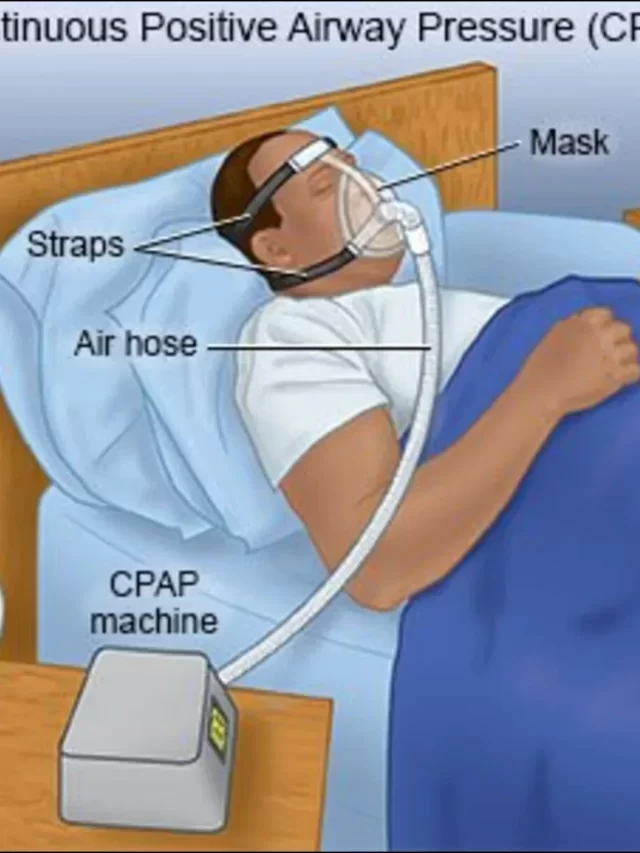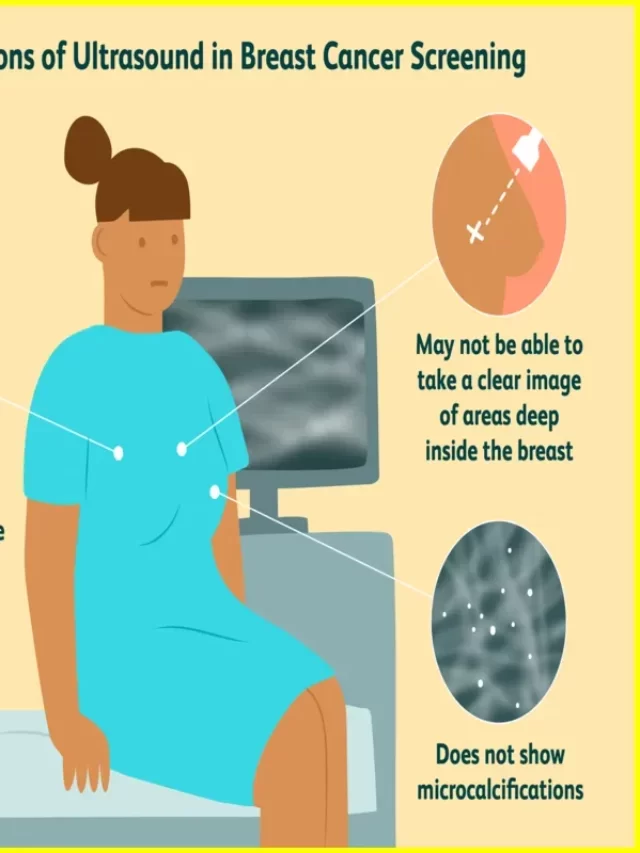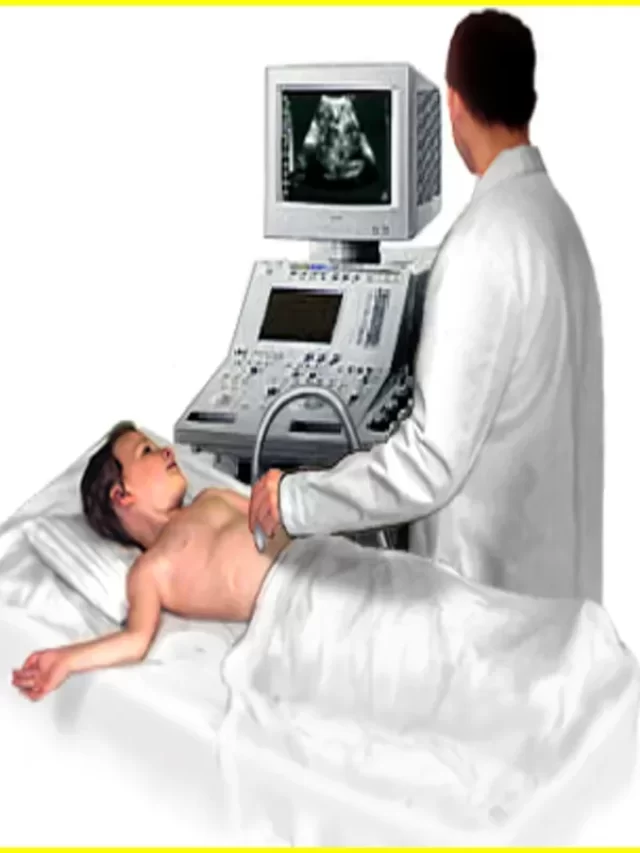
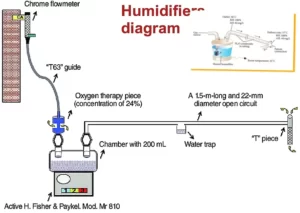
What is Humidifier
Capable of providing adequate levels of humidification & it has low resistance to flow and low dead space. It Provides microbiological protection to the patient & Maintenance of body temperature
What is the Basic principle of humidifier
1 Inhaling dry gases can cause damage to the cells lining the respiratory tract, impairing ciliary function
2 Within a short period of just 10 mint of ventilation with dry gases, cilia function will disrupt
3 This increases the patient’s susceptibility to respiratory tract infection
4 A decrease in body temperature occurs in the respiratory tract humidifies the dry gases
5 Air fully saturated with water vapor has an absolute humidity of about 44
mg/L at 37◦C
6 During nasal breathing at rest, inspired gases become heated to 36◦C with a relative humidity of about 80-90% by the time they reach the carina, largely because of heat transfer in the nose
7 Mouth breathing reduces this to 60-70% relative humidity
8 The humidifying property of soda-lime can achieve a humidity of 29 mg/L when used with the circle breathing system.
9 The Isotherm boundary point is where 37◦C and 100% humidity have been
achieved
10 Normally it is a few centimeters distal to the carina
11 Insertion of a tracheal or tracheostomy tube bypasses the upper airway and moves the isothermal boundary distally
Article About:- Health & fitness
Article About:- Medical Technology
Article About:- IR News
Article About:-Amazon Product Review
What is the Basic components of humidifier
1 Two ports, designed to accept 15 and 22 mm size tubings and connections
2 The head contains a medium with hydrophobic properties in the for5 The condensed water evaporates and returns to the patient with the next inspiration of dry and cold gases, humidifying themm of a mesh with a large surface area
3 It can make of ceramic fiber, corrugated aluminum or paper, cellulose, metalized polyurethane foam, or stainless steel fibers
4 Warmed humidified exhaled gases pass through the humidifier, causing water vapor to condense on the cooler HME medium
6 There is no addition of water over and above that previously exhaled
7 The greater the temperature difference between each side of the HME, the greater the potential for heat and moisture to transfer during exhalation and inspiration
8 The HME humidifier requires about 5-20 mint before it reaches its optimal ability to humidify dry gases
9 The performance of the HME is affecte
10 Water vapor content and temperature of the inspired and exhaled gases
11 Inspiratory and expiratory flow rates affect the time the gas is in contact with the HME medium hence the heat and moisture exchange
12 The volume and efficiency of the HME medium- the larger the medium, the greater the performance
How to use a humidifier safely
Before operating your humidifier, you should be aware of some of the risks of these devices and the safety precautions to avoid adverse health reactions.
manage humidity
Don’t let the room where you use the humidifier have too much humidity. The humidity in the room should be more than 50 percent. When the humidity exceeds this percentage, bacteria and mold can grow. It can trigger respiratory conditions like allergies and asthma.
Ideally, the humidity of a room should be between 30 and 50 percent. You can use a hygrometer to measure the humidity.
Run the humidifier only when you need it, not all the time, to keep the humidity level low.
use distilled water
Another health risk relates to particles other than water emitted into the air when you always operate a humidifier. Unhealthy mineral particles can be released by humidifiers, especially those with cool mist machines.
It has been observed that distilled water has fewer minerals and can be used in your humidifier.
keep your machine clean
You should always clean your humidifier after each use and also make sure the water tank is completely dry before using it again.
Rinse and change the water in your humidifier’s tank every night to avoid using standing water, which may contain mold or other bacteria or fungus.
You may see white buildup within the humidifier. This is known as scale and can be emitted into the air and the particles can enter the lungs, causing health problems to the patient.
To avoid or remove scale or mold, be sure to clean your humidifier every few days with a mixture of water and vinegar or hydrogen peroxide, or any other cleaning solution recommended by the manufacturer.
change filters regularly
The humidifier needs a filter or other parts need to be cleaned or replaced. For example, regularly change the filter in your central humidifier according to the manufacturer’s directions.
Humidifier Risks and Precautions
Safe use of a humidifier minimizes the risks, but keep the following in mind:
- Excessive humidity in the room is dangerous.
- Unclean humidifiers emit harmful substances that can cause respiratory problems.
- Humidifiers with hot mist can burn children when touched.
- Cool mist humidifiers can disperse dangerous minerals and other particles that irritate the lungs.
- Distilled water is the safest type of water to use with a humidifier.
- An old humidifier may contain harmful bacteria or mold that you cannot clean or remove.

